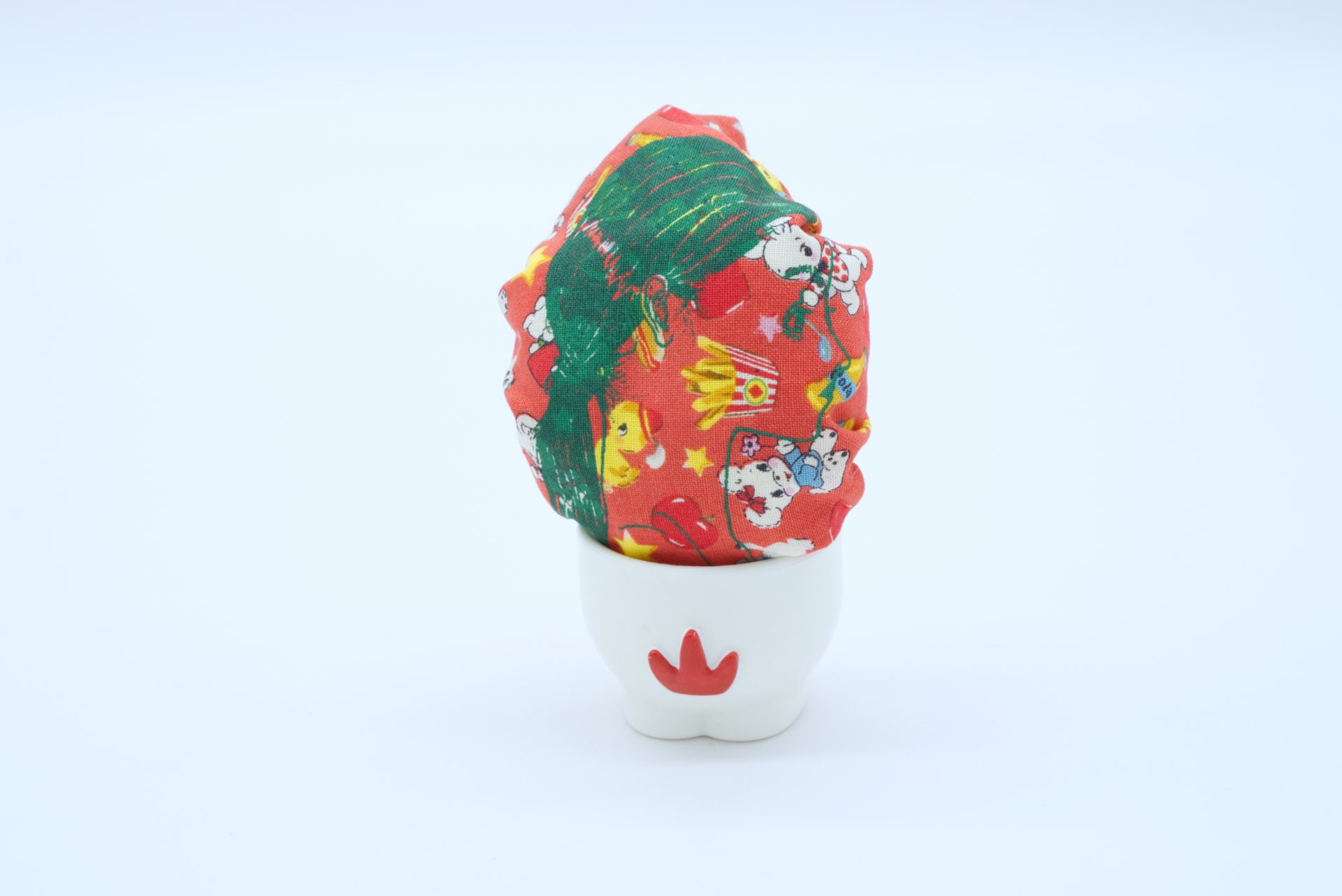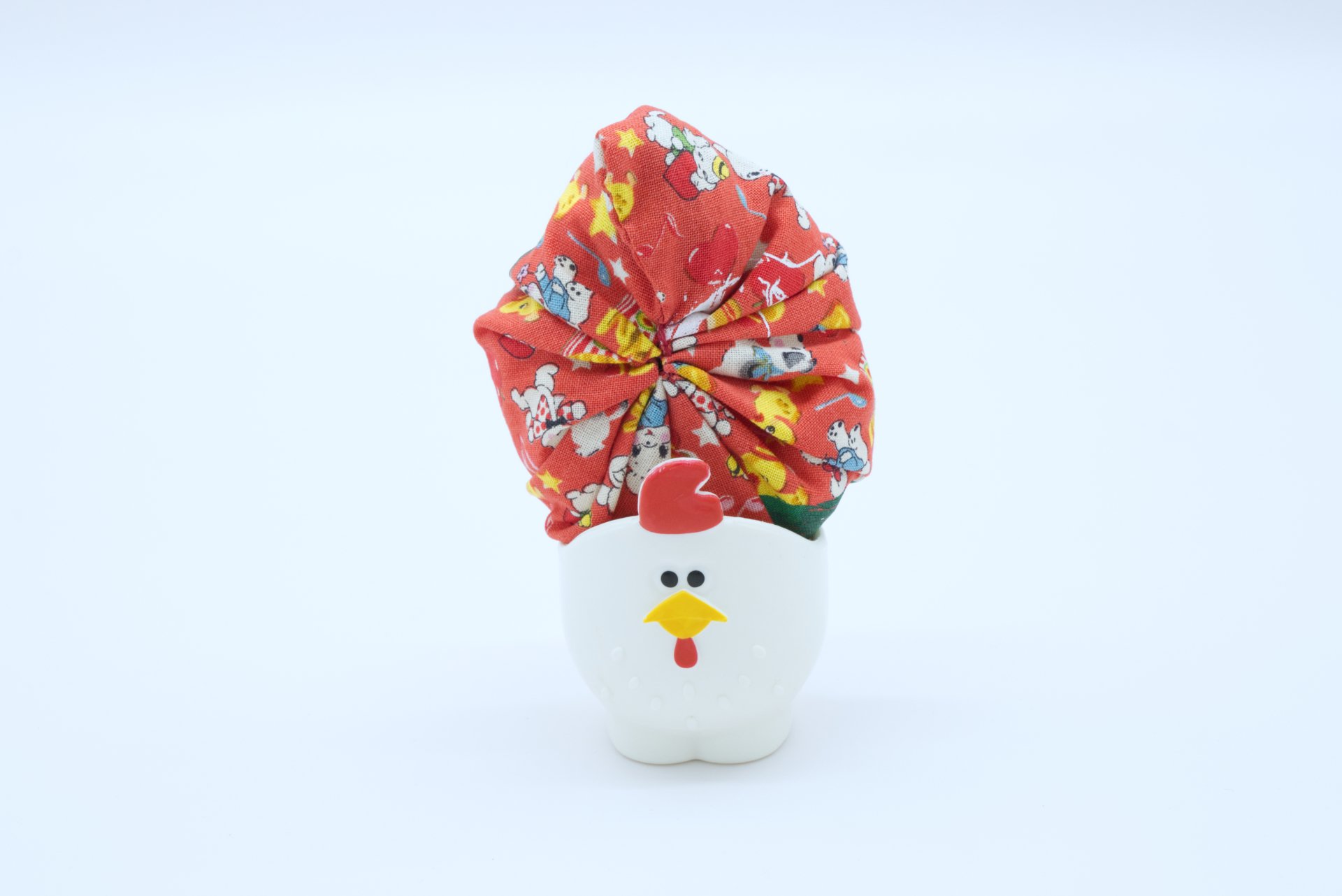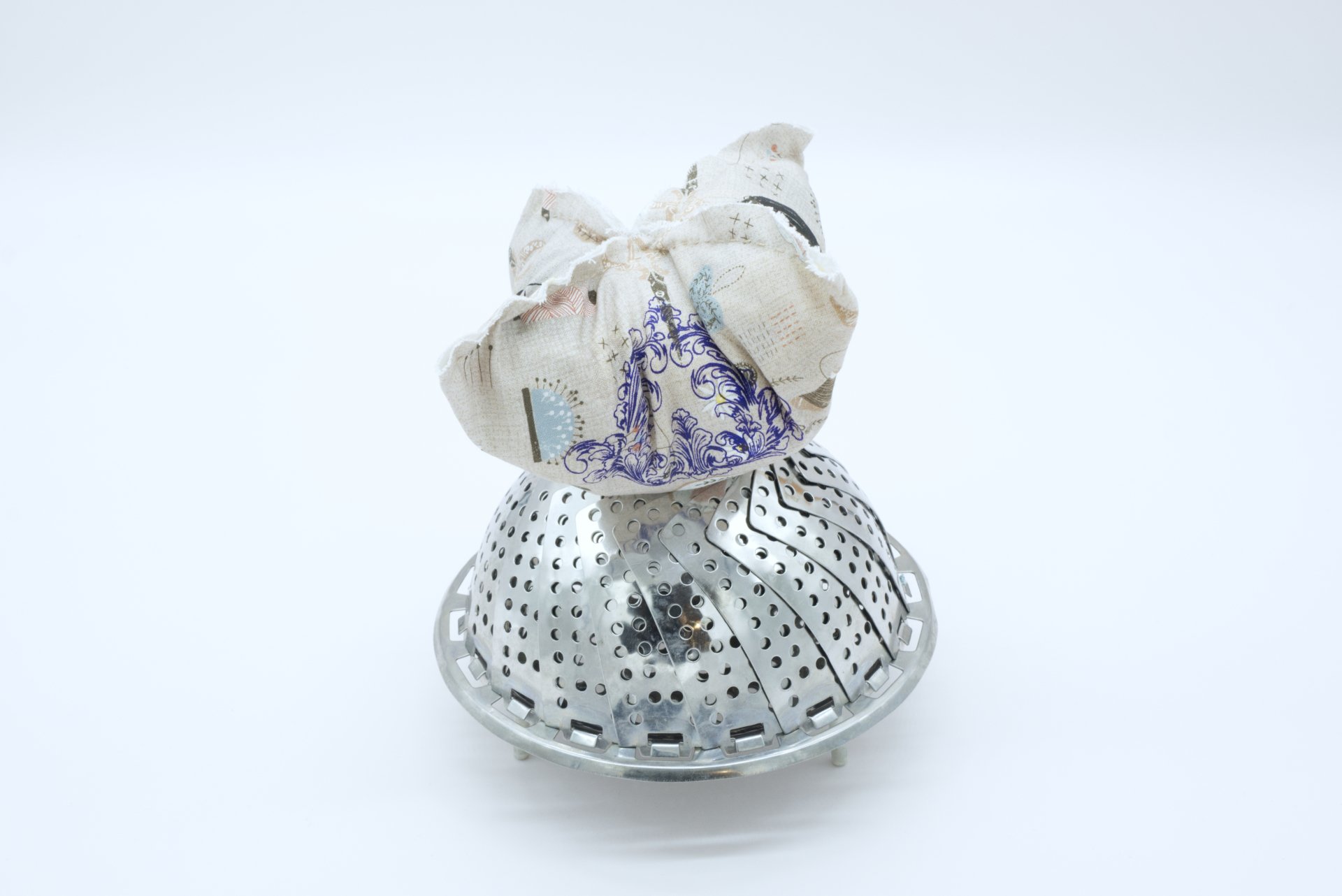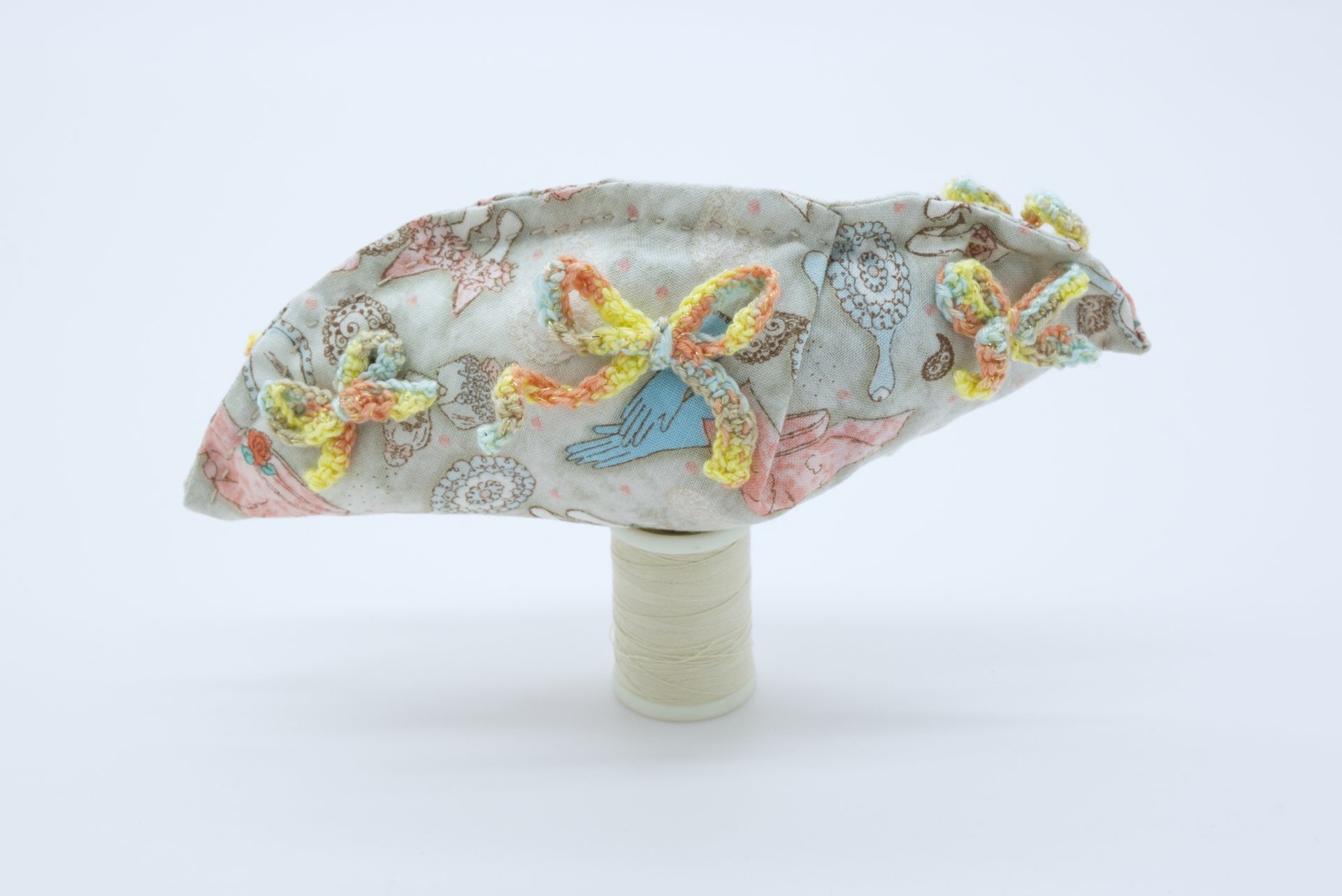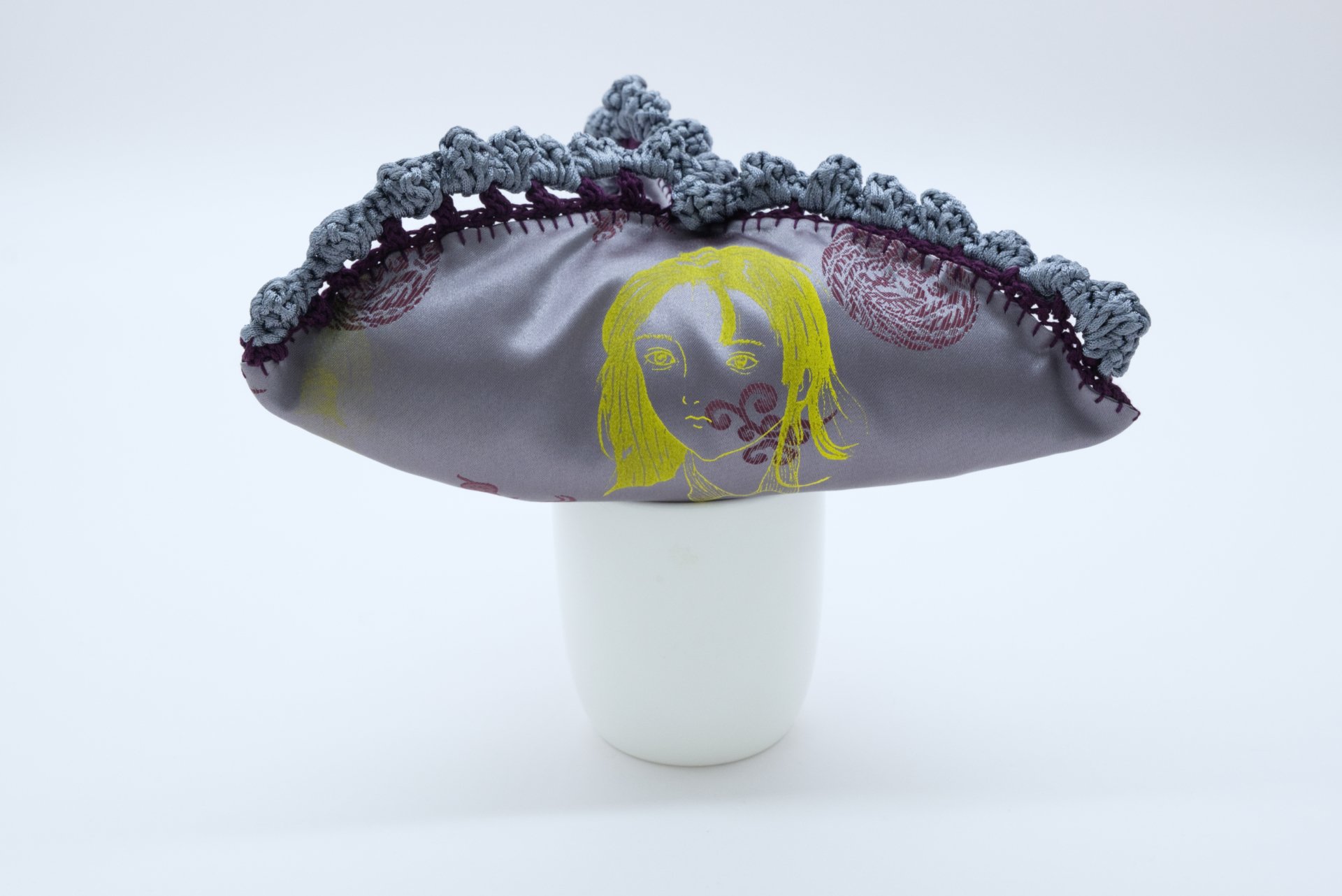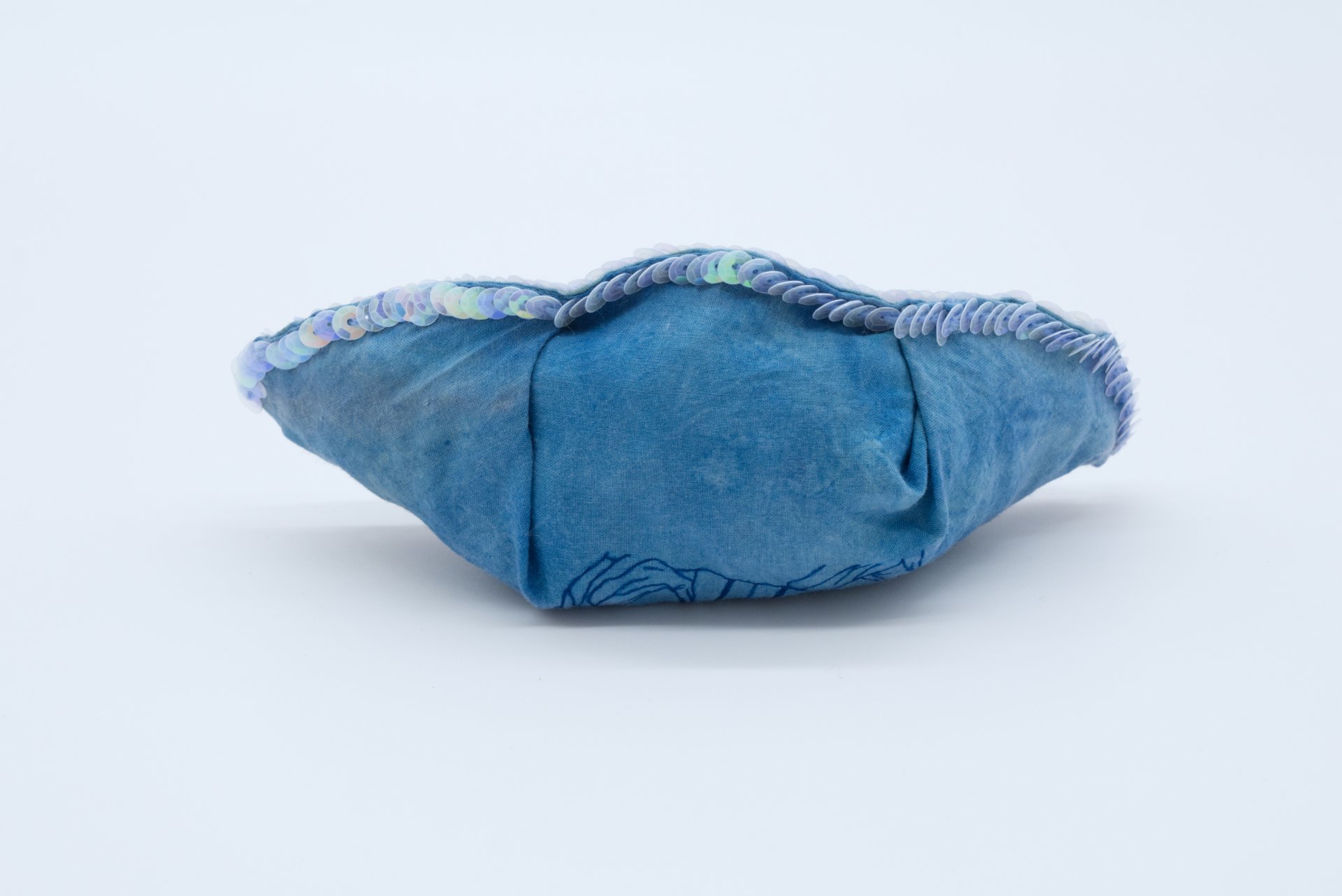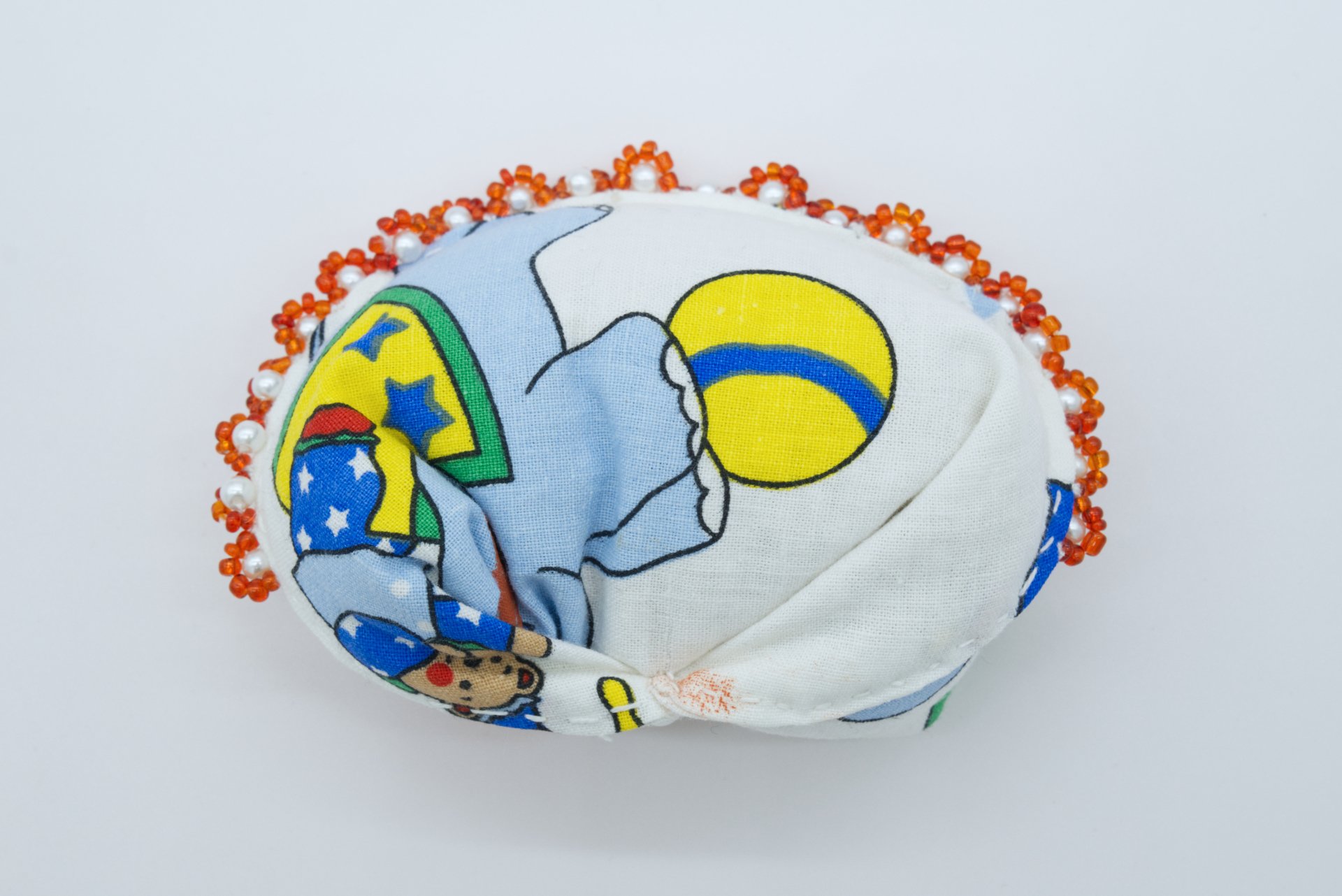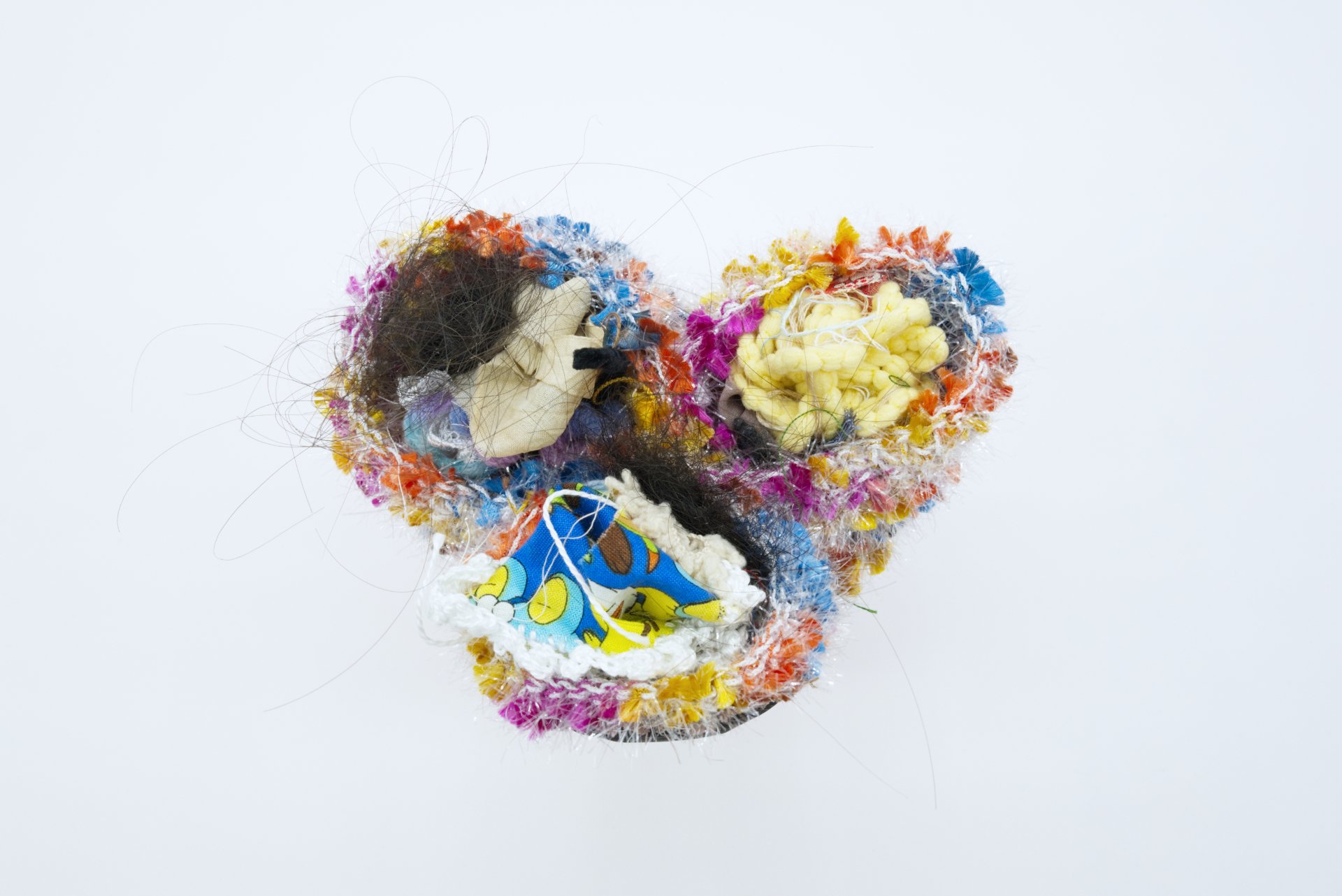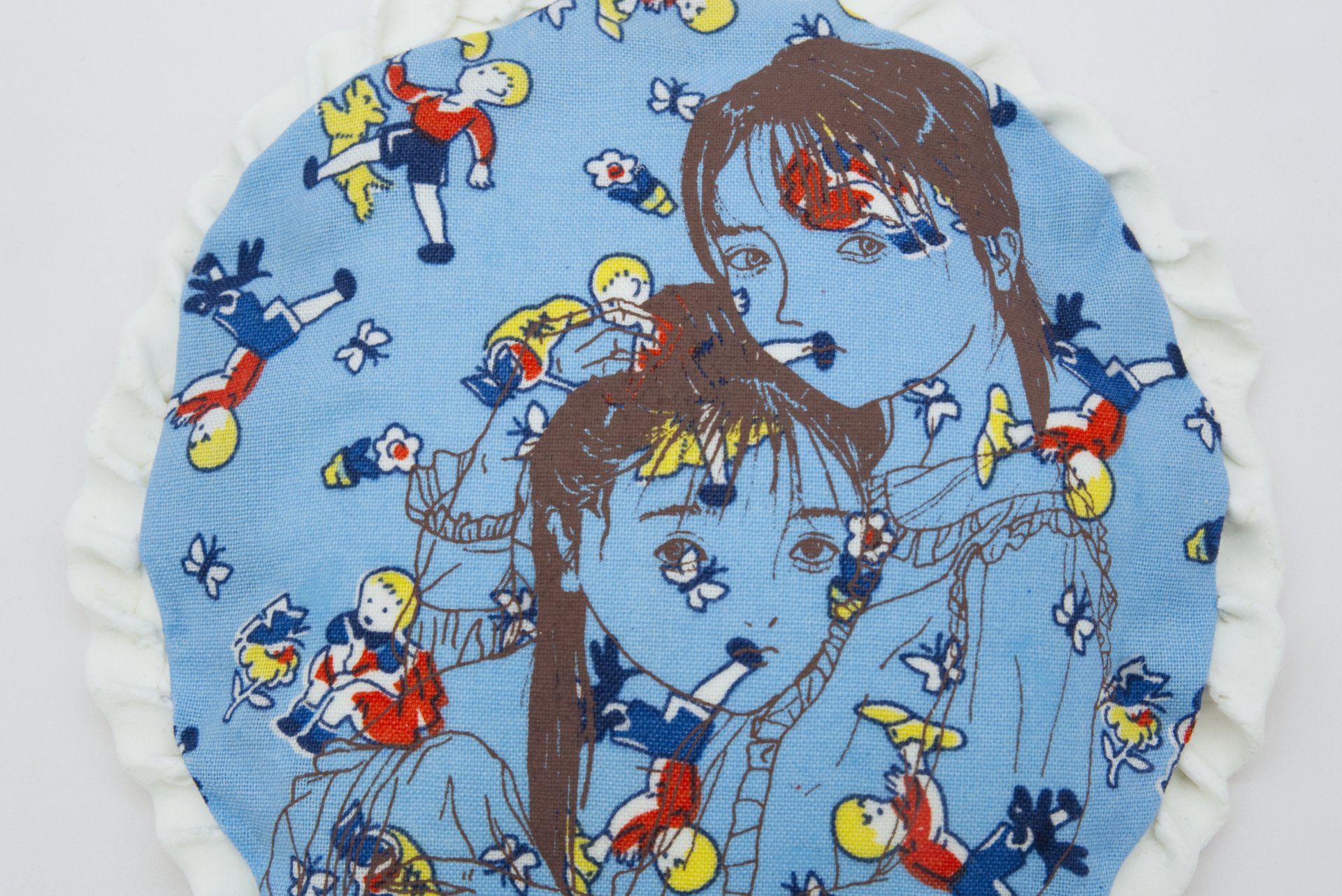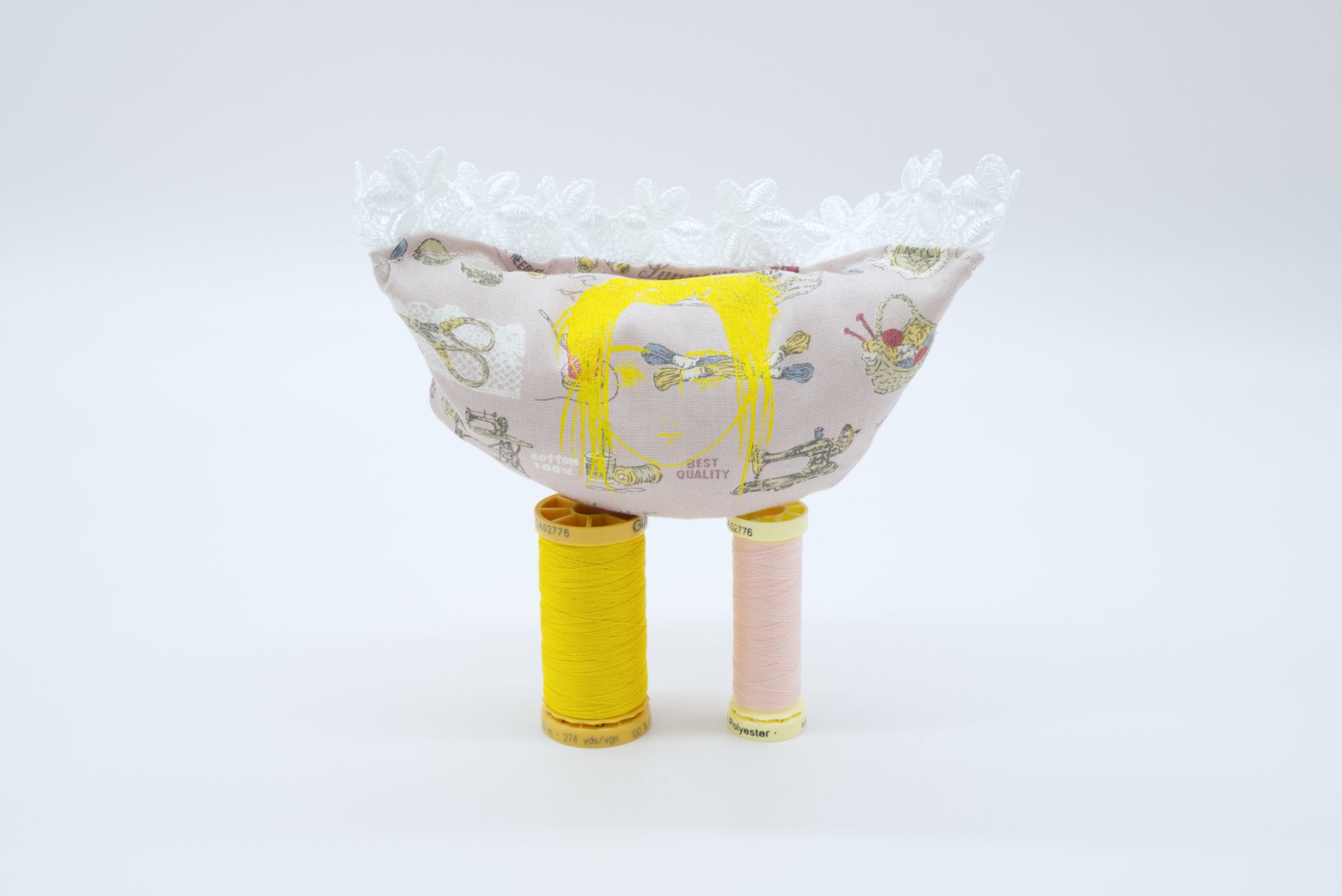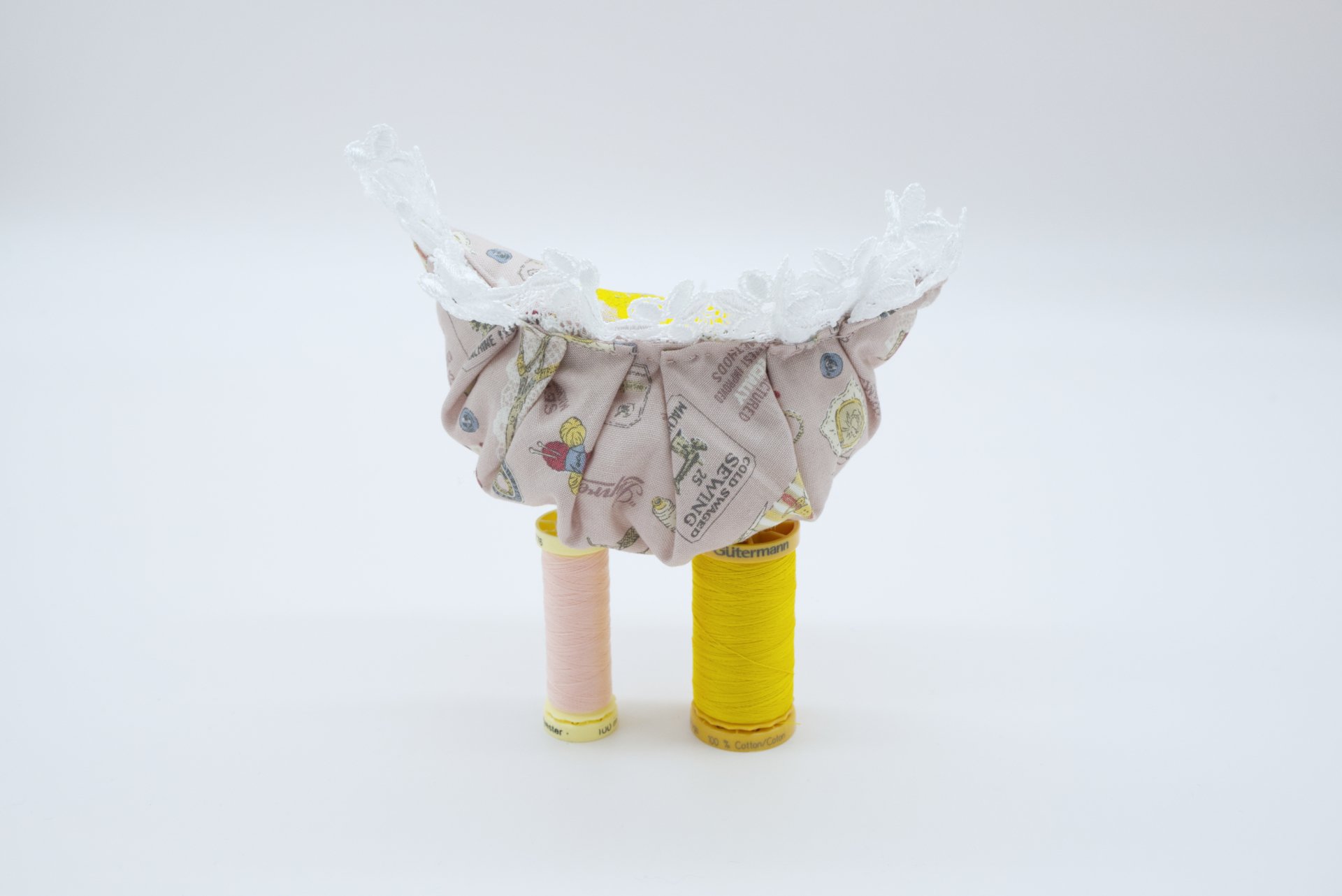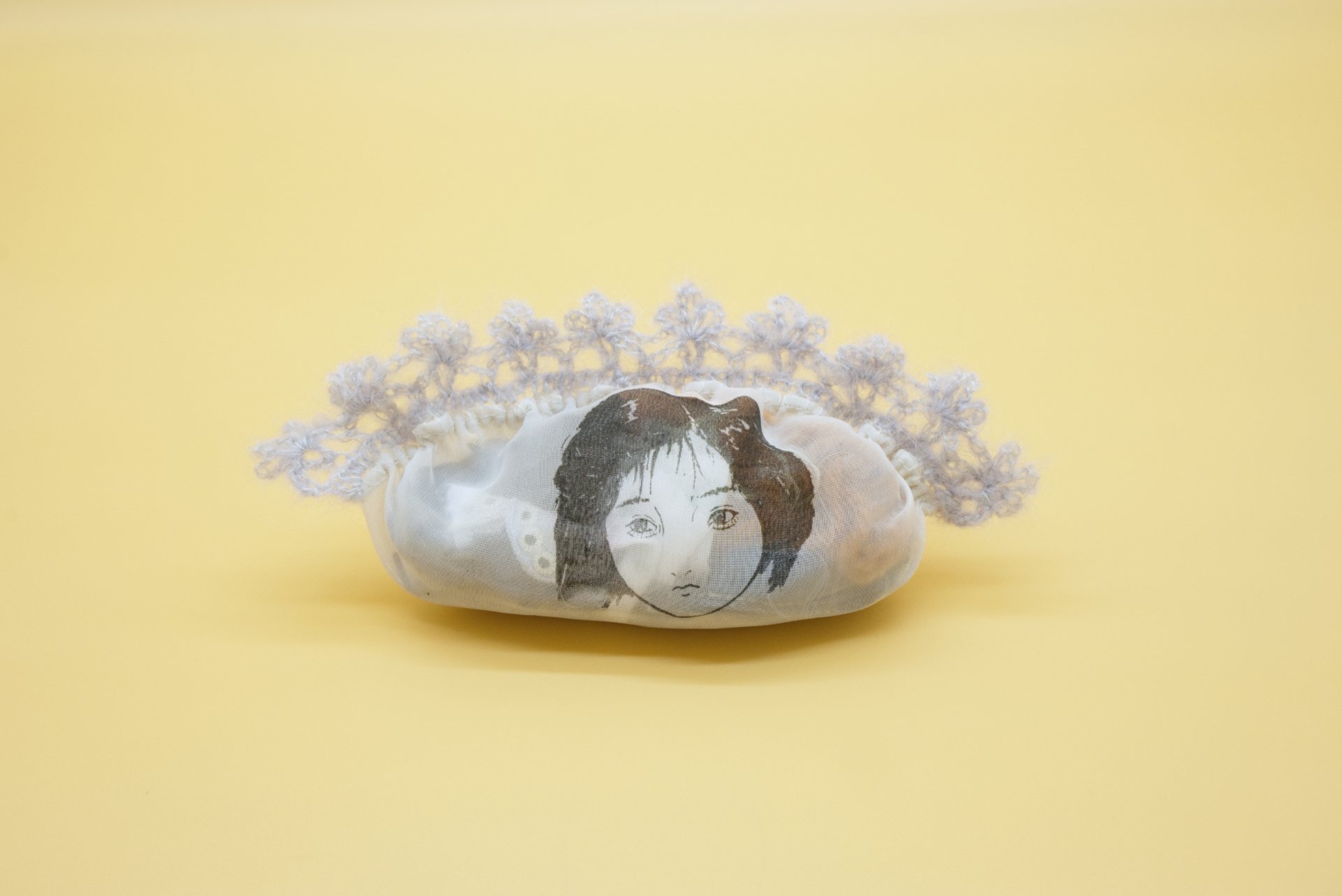16 Ways to Fold a Dumpling
2024-2025
Screenprinting and cyanotype on fabric and plastic, yarn, beads, faux pearls, sequins, thread, hair, polymer clay, fibre fill and found objects
Dimensions variable
“16 Ways to Fold a Dumpling” is concerned with the idea of consumption. In the realm of kawaii culture, where cuteness corresponds to a certain kind of femininity which can be simultaneously suffocating and empowering, the bishōjo is both the consumer and the consumed. The pervasiveness of kawaii aesthetics has contributed to the increasing commodification of sex to some extent. Imprinting the bishōjo’s face on a dumpling suggests that we if don’t consume her, the representation of eros, we will be starved of desire.
In Chinese culture, food is not mere sustenance, but also riddled with power and social dynamics. A dumpling made with love can also be a reminder of the patriarchal oppression in banal domestic life, since it is often the women who make these dumplings. I see the ritualistic act of folding dumplings as a method of materialising the flow of female emotions and psyche. Just as women gather around the kitchen to wrap dumplings for their family, the folds embody in-between spaces that create opportunities for women to escape the male gaze and build kinship. The dumplings are literally presented as “food for thought”, inviting the audience to contemplate the relationship between eros, thanatos and consumerism.
